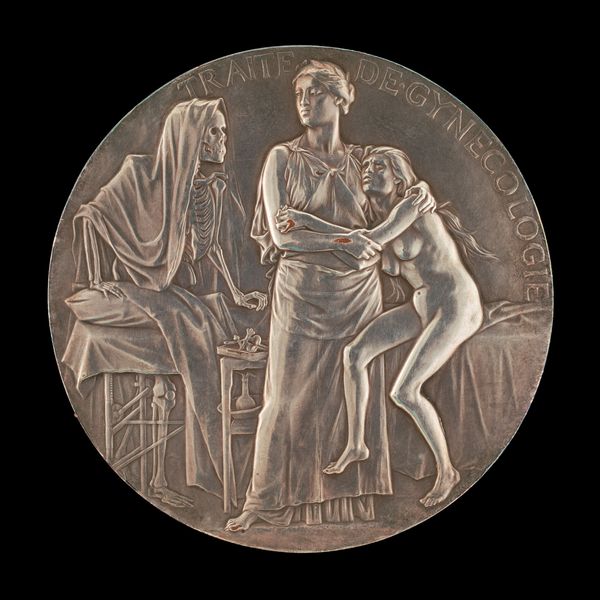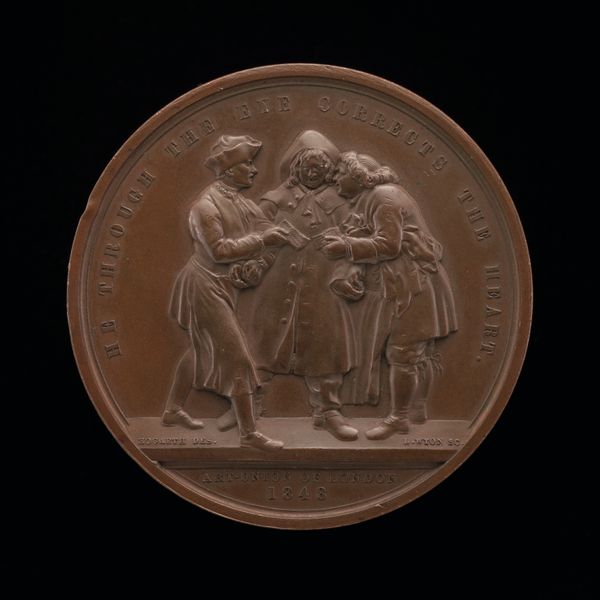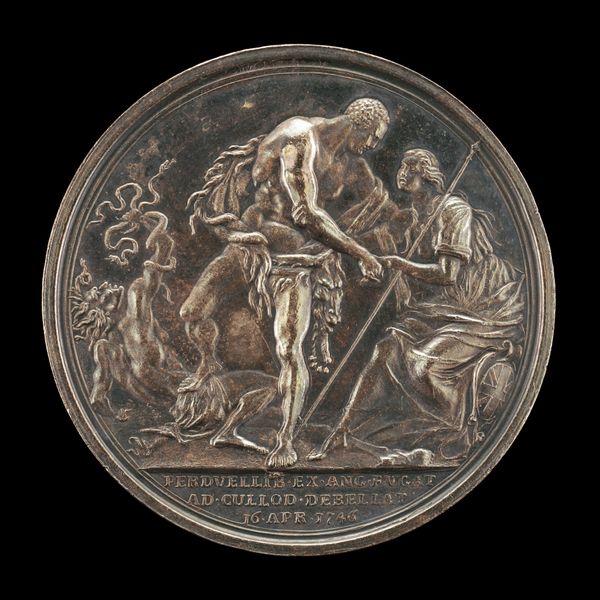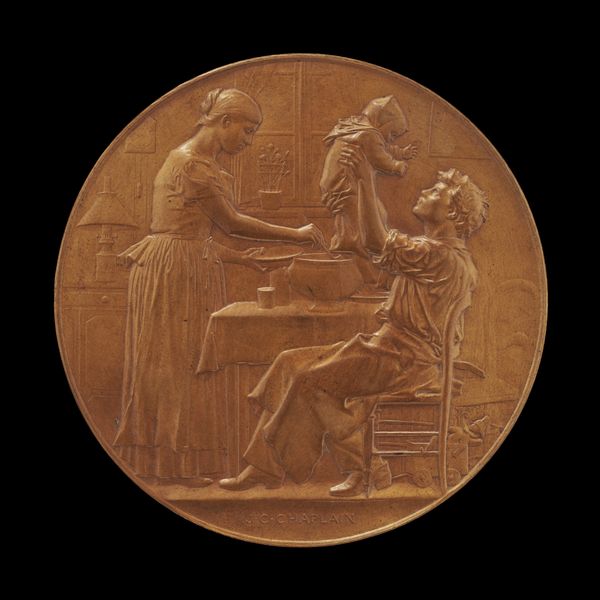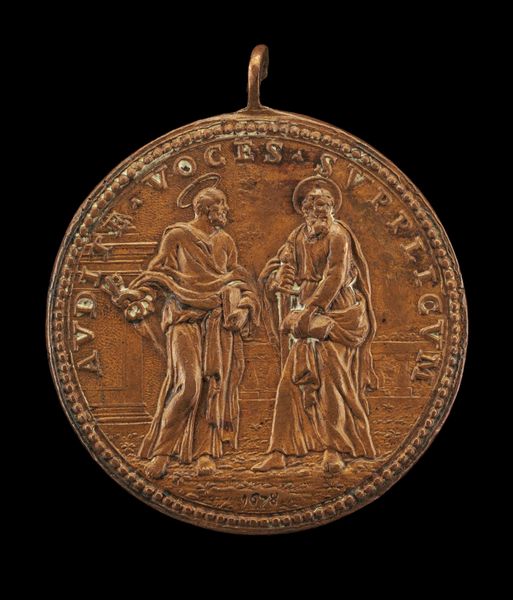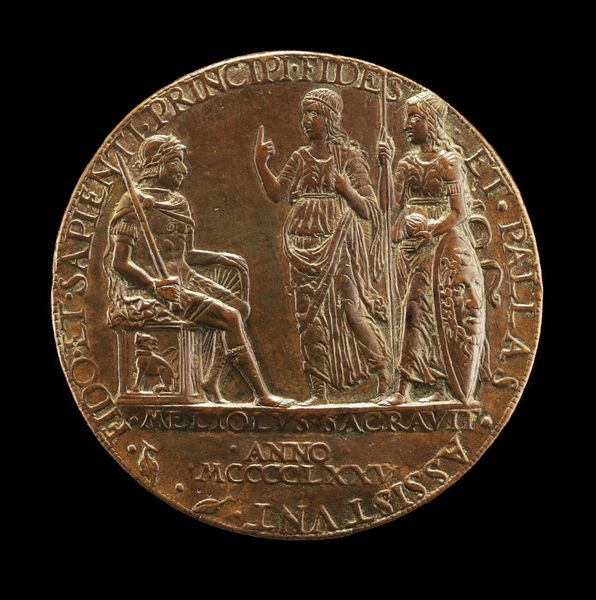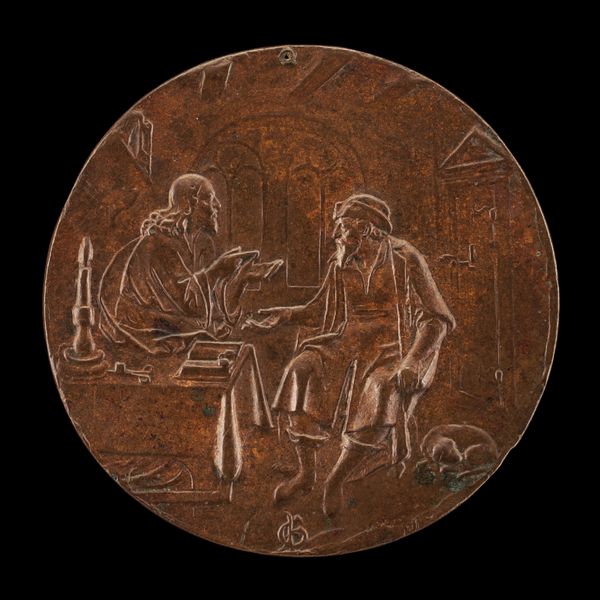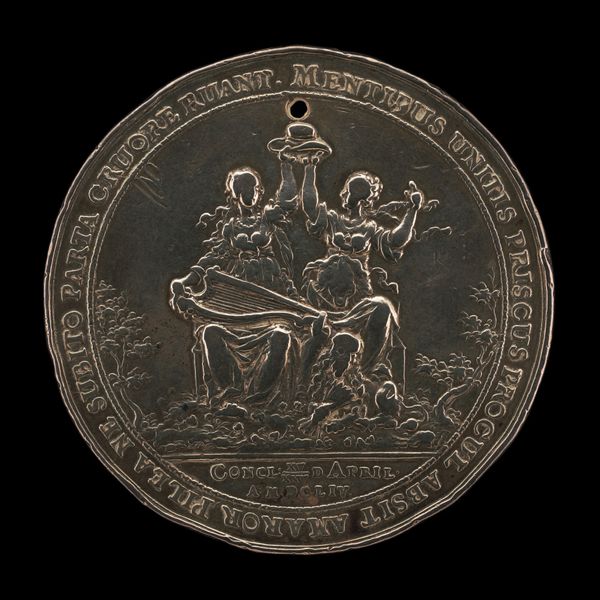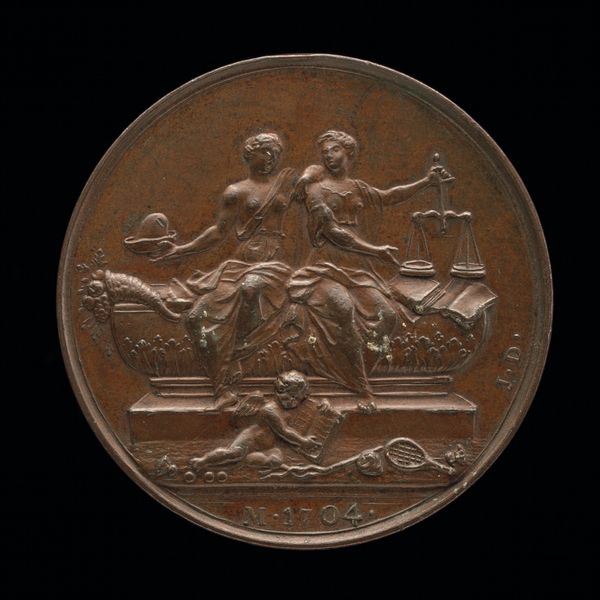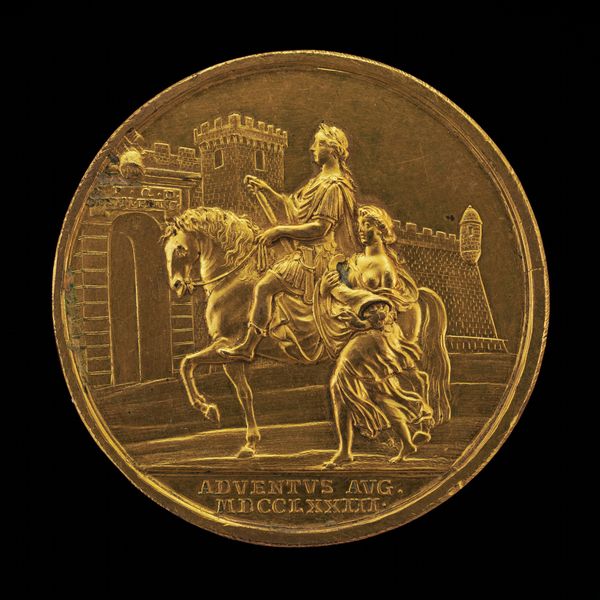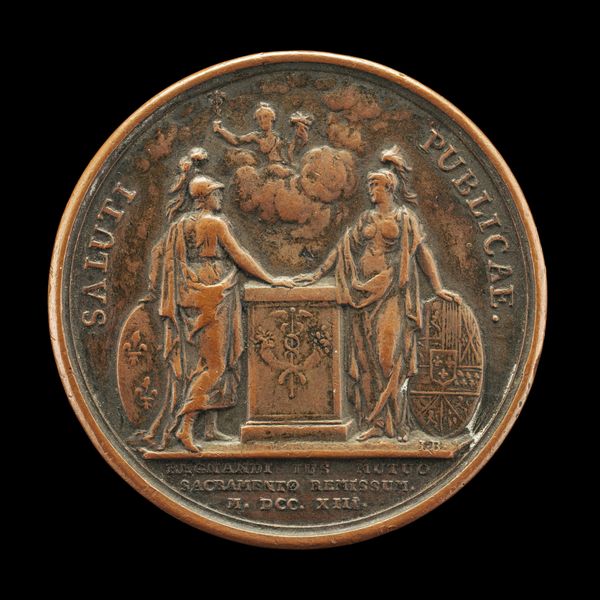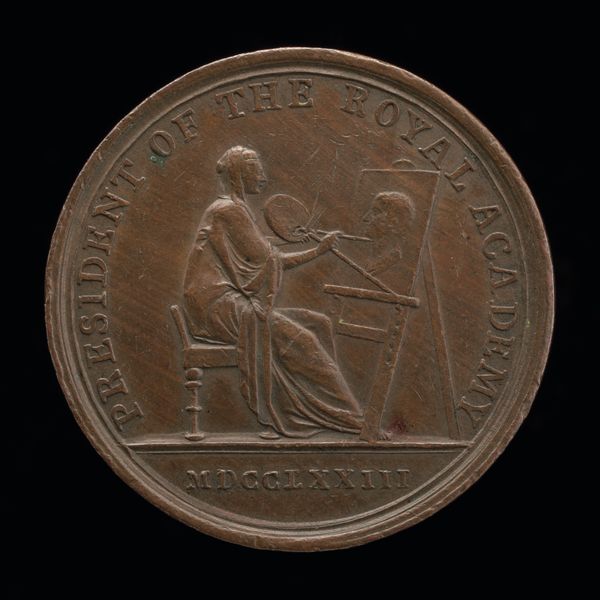
Michel-Eugène Chevreul, 1786-1889, Chemist, Physicist, and Philosopher 1886
0:00
0:00
Dimensions: overall (diameter): 10 cm (3 15/16 in.)
Copyright: National Gallery of Art: CC0 1.0
Curator: This compelling artwork is a metal relief portrait medal created in 1886 by Louis-Oscar Roty, honoring Michel-Eugène Chevreul, the renowned chemist, physicist, and philosopher. Editor: My first impression is one of admiration, mixed with perhaps a hint of patriarchal undertones. The imagery, rendered in the metallic relief, presents a classic academic scene, yet it feels symbolically charged regarding the positioning of the figures. Curator: Let’s start with the composition. Roty masterfully balances realism with a clear neoclassical influence. Note the inscription along the border, framing the central figures and the tactile quality of the metal that gives form to light and shadow. The play of textures is evident: from the drapery of the figure on the left to the subject’s suit. Editor: Precisely, and the 'figure on the left', a muse-like allegorical woman of 'French Youth' according to the text, tends to Chevreul who sits in an imposing, seated pose with what appears to be a sprig of laurel leaves. It certainly reads like a visual celebration of academic achievement but framed by potentially loaded gestures. She is literally offering accolades to the seated scholar. Curator: The realism comes in the detailing of Chevreul's features. Roty captures a certain gravitas, and perhaps hints at a progressive, philosophical mind with the set expression of the subject. The composition is also dynamic: not static but rendered to draw the eye around the piece to appreciate its full affect. Editor: True, and while appreciating Roty’s craft, I'm drawn to how this imagery reproduces and entrenches specific social hierarchies. Here, the patriarchal structure is enshrined literally in metal, linking Chevreul’s achievements to a kind of 'divine' right or fate endorsed through these allegorical structures of 'youth'. It creates a narrative around progress tied specifically to older European scholars rather than considering the labor which allowed him to have access to science and discovery. Curator: Well, consider the medal as an object. It exists to commemorate an individual’s accomplishments. Chevreul had an exceptional career that stretched across multiple fields; Roty presents the legacy for posterity. Editor: That is definitely true but how these legacies are created and re-created warrants critical investigation into what we elevate, whose stories, and why! Curator: A balanced perspective for considering the depth behind the aesthetic considerations of the work. Editor: Indeed; this medal offers not just a portrait, but an invitation to engage critically with how legacies are built and the power structures they reinforce.
Comments
No comments
Be the first to comment and join the conversation on the ultimate creative platform.
